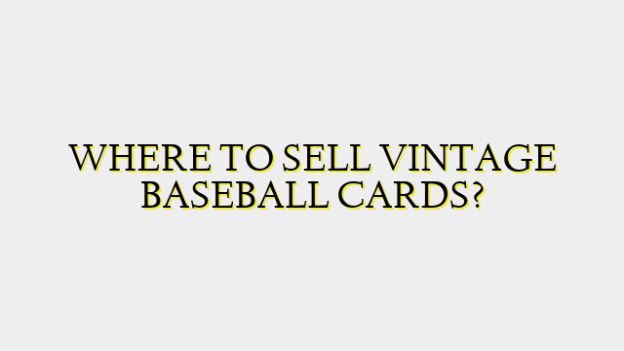Online Marketplaces – Some of the largest and most popular online marketplaces for vintage baseball cards include eBay, COMC (Collectors Universe), Beckett Marketplace, and Ruby Lane. eBay is likely the biggest marketplace with the most daily active buyers searching for vintage cards. You can list individual cards or full collections on eBay for buyers worldwide to bid on. COMC is excellent for grading and consigning high value cards. With them, your cards are professionally graded, imaged, and posted for sale on their website which thousands of collectors visit daily. Beckett Marketplace focuses specifically on sports collectibles like cards. Ruby Lane deals more in vintage and antique items in general but has a large base of card collectors as well. Selling on these sites provides great exposure to reach active collectors but you’ll need to price items competitively and pay commission/consignment fees.
Local Card Shops – Nearly every city with a population over 100,000 people will have at least one local card shop that buys and sells vintage cards. These “brick-and-mortar” shops are a good option if you want quick cash or don’t want to deal with packing/shipping items yourself. Most card shops will give you 50-70% of the estimated market value for cards in their current condition. Great shops will have frequent buyers looking for higher end vintage so it’s worth calling around to different stores to find the best local options. Going into the actual store also gives you a chance to build rapport with the shop owner which could lead to future buys.
Collector/Dealer Network – The most lucrative sales usually happen within collectors’ private networks and at large card shows/conventions. Over the years, serious vintage collectors get to know each other both online and at events. Reach out to well-known collectors on social media as they’re always looking to add to their collections. Offer to bring cards to national conventions like the National Sports Collectors Convention in Chicago where hundreds of dealers set up booths. The heavy hitters attend these looking specifically for one-of-a-kind vintage gems and are willing to pay top dollar. With patience and reputation-building within collector circles, you can make six-figure sales this way.
Auctions – Heritage Auctions, Morphy Auctions, Robert Edward Auctions, and other auction houses do yearly sales focused only on vintage baseball memorabilia including high-value cards. Consigning pieces to a respected auctioneer provides the legitimacy and hype of a live, online, or live/online hybrid auction. Auction houses take a commission (usually 15-20%) but shoulder responsibility for promotion, handling bids/payment, insurance, and more. Big auction sales reach a global audience of collectors ready to spend. Downsides are the time commitment and risk of the piece not meeting reserve if set. Auction is best for one-of-a-kind or exceptionally high quality vintage rarities.
For casual vintage baseball card sellers, the most straightforward options are online marketplaces like eBay or selling to a local card shop. But those with the most valuable/desirable pieces to sell should leverage their extensive networks within the collector community by attending conventions or by consigning prized cards to auction houses, which provides the highest level of buying competition and potential to realize top dollar for the rarest vintage treasures. No matter the avenue, photography, condition grading accuracy, and competitive pricing are critical to achieving the best possible sale outcomes.


